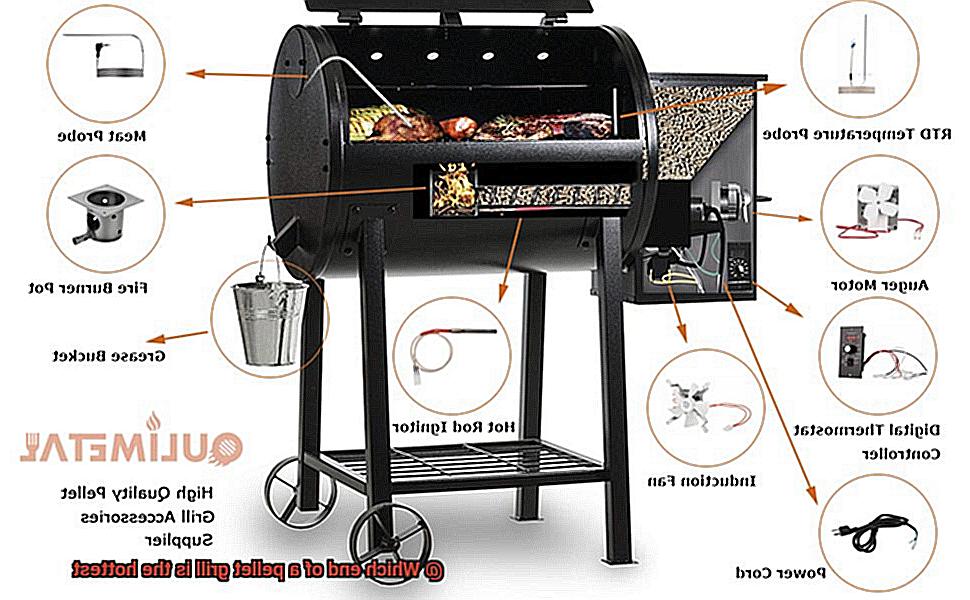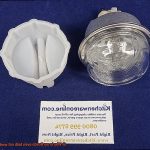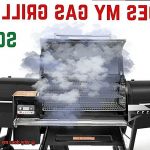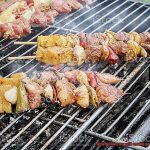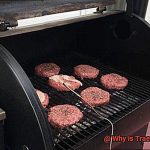Do you ever feel like your pellet grill is playing favorites with one end cooking faster than the other? Don’t worry, you’re not alone in this frustrating experience. Uneven temperatures can make or break your meal, and it’s important to understand why this happens and which end of a pellet grill is the hottest.
In this post, we’ll help you solve the mystery of unevenly cooked meat on your pellet grill. We’ll share practical tips on how to adjust your grill’s heat zones and explain how pellet grills work. With our advice, you’ll be able to cook your meat to perfection every time.
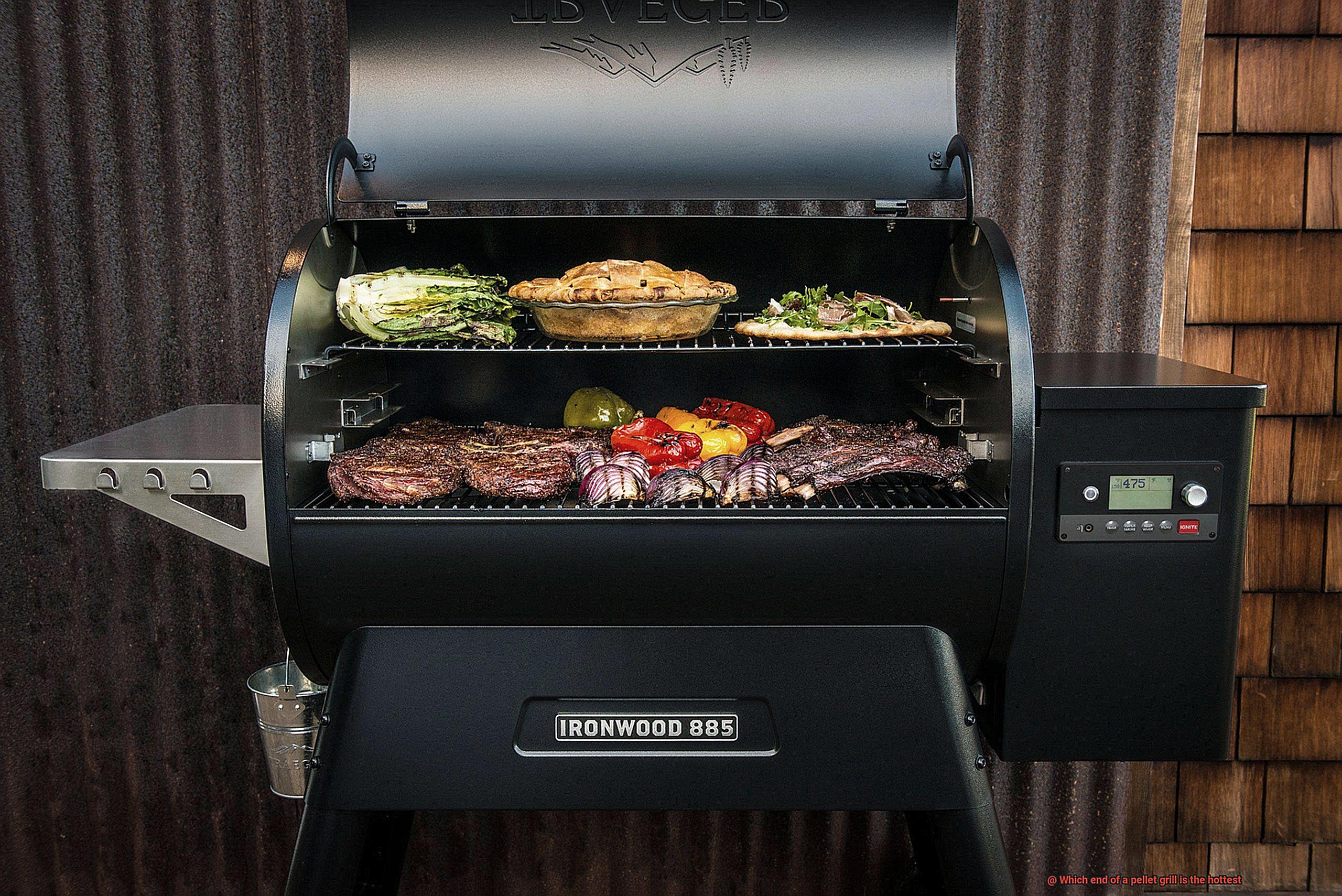
But first, let’s dive into an interesting fact about pellet grills. Did you know that they were invented in the 1980s as a more energy-efficient way of smoking meat? It’s true. And now they’ve become a staple for outdoor cooks who value convenience and consistent results.
Whether you’re a seasoned pitmaster or just starting out, we’ve got you covered. So read on to discover which end of a pellet grill is the hottest and how to master your grill’s temperature zones like a pro.
Contents
What is a Pellet Grill?
Then it’s time to upgrade to a pellet grill – the ultimate outdoor cooking device.
But what exactly is a pellet grill? It’s a smoker that uses wood pellets as fuel. An electric auger delivers the pellets into a fire pot, where they ignite and produce heat and smoke. The heat and smoke are then circulated around the cooking chamber by a fan, ensuring your food is cooked evenly and infused with smoky flavors.
But why choose a pellet grill over other types of grills? Firstly, they’re incredibly easy to use with digital controllers that allow you to set precise temperature and cooking time. This means you can achieve consistent results every time you cook.
Pellet grills are also versatile enough to handle any outdoor cooking technique you throw their way. Whether it’s smoking, slow-roasting, grilling, or searing, these grills have got you covered. Plus, many models come with additional features like rotisserie attachments, side burners, and warming racks.
One common question about pellet grills is which end is hotter. While there are general guidelines for determining which end is hotter, it’s important to remember that each grill is unique, and factors like wind and ambient temperature can affect temperature distribution. To ensure even cooking, use a thermometer to measure the temperature at both ends of the cooking chamber.
How Does a Pellet Grill Work?
It’s time to upgrade to a pellet grill. But how does this marvel of outdoor cooking work? As an expert on the subject, let me walk you through it.
First off, a pellet grill uses wood pellets as fuel. These pellets are made of compressed sawdust and come in a variety of flavors, such as hickory or applewood, to impart a delicious smoky flavor to your food. The pellets are loaded into a hopper on the side of the grill and are then fed into a firepot by an auger.
But what sets a pellet grill apart is its digital controller. This fancy gadget allows you to set the temperature you want to cook at and maintains that temperature throughout the cooking process by adjusting the speed at which pellets are fed into the firepot. This means no more fiddling with vents or constantly checking your food – just set it and forget it.
And the best part? A pellet grill can do it all. With a temperature range from 180°F to 500°F, it can handle low and slow cooking for smoking meats or high-temperature grilling for burgers and steaks. Plus, many pellet grills come with additional features like rotisserie attachments, side burners, and warming racks.
But keep in mind that every pellet grill is unique, so it’s important to use a thermometer to measure temperature at both ends of the cooking chamber. Factors like wind and ambient temperature can also affect temperature distribution.
Factors that Affect the Temperature Distribution in a Pellet Grill
Achieving evenly cooked food is critical for any grilling process, and understanding the factors that impact temperature distribution is key to perfecting your outdoor cooking game.
Firstly, the type and quality of pellets used can greatly affect temperature distribution in a pellet grill. Different pellet types burn at different rates and temperatures, which can impact how heat is distributed throughout the grill. Therefore, it’s crucial to use high-quality pellets that are specifically designed for use in pellet grills to ensure consistent results.
Secondly, the size and shape of your grill also play a role in temperature distribution. Grills come in various sizes and shapes, and each one distributes heat differently. A circular-shaped grill may distribute heat more evenly than a rectangular one, while a larger cooking surface may require more time to heat up evenly.
The placement of pellets in the hopper can also impact temperature distribution. If your grill has a hopper on one side, uneven heat distribution can occur if the pellets aren’t evenly distributed throughout the hopper. It’s essential to spread them out evenly to prevent this issue.
Finally, weather conditions can also play a role in temperature distribution. Windy or rainy conditions can impact how evenly heat is distributed throughout the grill. So, it’s important to take weather conditions into account when setting up and using your pellet grill.
Identifying Hot Spots in Your Pellet Grill
The secret to achieving perfectly cooked meals lies in identifying the hot spots in your grill. Hot spots are areas that tend to be hotter than others, and if left unnoticed, they can ruin your grilling experience. But don’t worry, I have some simple tips to help you identify hot spots in your pellet grill and cook like a pro.
One way to identify hot spots is by using a piece of white bread or aluminum foil. Preheat your grill to the desired temperature and place the bread or foil on the grates, then close the lid. After a few minutes, check for any dark or burnt spots on the bread or foil. These burned spots indicate where the hot spots are in your grill.
Alternatively, you can use an infrared thermometer to measure the temperature of different areas in your grill. This tool allows you to get a more accurate reading of the heat distribution in your grill. Simply aim the thermometer at various parts of the grill and take note of the readings.
Once you have identified the hot spots in your pellet grill, you can adjust your cooking techniques accordingly. If one side of your grill is hotter than the other, rotate your food or move it to a cooler area for even cooking. You can also adjust the temperature and airflow settings on your grill for better heat distribution.
Here are some additional tips to help you master identifying hot spots in your pellet grill:
- Use a pen and paper to take notes on where the hot spots are in your grill for future reference.
- Be mindful of how you position food on the grates, as this can affect heat distribution.
- Clean your grill regularly to prevent buildup that can affect heat distribution.
- Consider investing in a griddle or cast iron skillet for more even cooking.
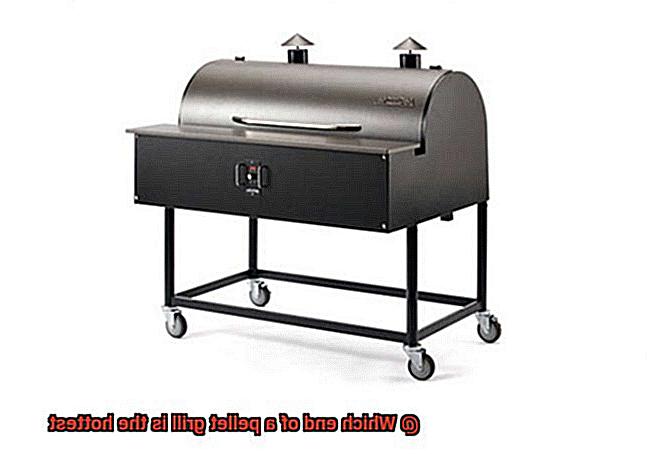
Wind and Ambient Temperature Considerations
Let’s start with wind. Don’t underestimate the power of a strong gust – it can cool down your grill and make it tough to maintain a consistent temperature. As the wind blows away the heat being generated by the grill, you’ll find it harder to keep your grill hot.
But fear not – there are ways to combat the wind. One option is to set up a windbreak around your grill using materials like plywood or other solid barriers. Another option is to position your grill next to a wall or other structure that can act as a windbreak. By shielding your grill from the wind, you’ll be able to maintain a steady temperature and cook your food evenly.
Now, let’s talk about ambient temperature. When it’s cold outside, it can be difficult to get your grill up to temperature and keep it there. The cold air will cool down your grill and make it harder for it to generate heat. Don’t let this discourage you, though – there are solutions.
Firstly, preheat your pellet grill before adding any food. This will help raise the internal temperature of the grill and make it easier to maintain a consistent temp. Additionally, consider using more pellets than usual in colder weather – this will help generate more heat and keep your grill working at its best.
Using a Thermometer to Determine Which End of Your Pellet Grill Is Hotter
Don’t let hot spots and cool zones ruin your grilling game. Using a thermometer to determine which end of your pellet grill is hotter can save the day and ensure perfectly cooked food every time.
First and foremost, you need a reliable thermometer that can accurately measure the temperature of your grill. Opt for a digital thermometer with a probe as it’s the most accurate and convenient option. Simply insert the probe into the grill grate and read the temperature on the digital display.
Once you have your thermometer, preheat your pellet grill to ensure it’s at the desired temperature. Once preheated, place the thermometer at different areas of the grill grate, starting from one end of the grill to the other. Take note of the temperature readings at each location.
Typically, the center of the grill grate closest to the firepot tends to be the hottest spot on most pellet grills. However, some grills may have uneven heating patterns due to airflow or insulation issues. By using a thermometer to measure the temperature at different spots on your grill, you can identify any hot spots or cool zones and adjust accordingly.
Here are some tips for adjusting heat distribution:
- If one end of your grill is significantly hotter than the other, adjust your settings to even out the heat distribution.
- If certain areas of your grill are cooler than others, move food around accordingly to ensure even cooking.
- Consider using a diffuser or heat deflector to distribute heat more evenly across your grill.
By taking these steps, you can avoid over or undercooking your food and achieve perfectly cooked meals every time.
77qV-PKuk3Y” >
Conclusion
In conclusion, uneven temperature distribution can make or break your grilling experience. But don’t worry, with the right knowledge and tools, you can conquer your pellet grill’s heat zones. Pellet grills are a fantastic option for outdoor cooking due to their ease of use, versatility, and consistent results. It all comes down to understanding how they work and what factors affect temperature distribution.
Wind, ambient temperature, pellet quality, grill size and shape, and hopper placement can all impact the temperature distribution in your grill. To identify hot spots in your grill, try using white bread or aluminum foil or an infrared thermometer. By doing so, you’ll be able to adjust your cooking techniques accordingly.
Furthermore, using a thermometer to measure the temperature at different spots on your grill can help you identify any hot spots or cool zones. Once you’ve located them, it’s time to adjust the heat distribution through settings or moving food around as needed. And if that’s not enough, diffusers or heat deflectors can help even out the heat.
With these tips in mind, you’ll avoid overcooking or undercooking your food and achieve perfectly cooked meals every time.

